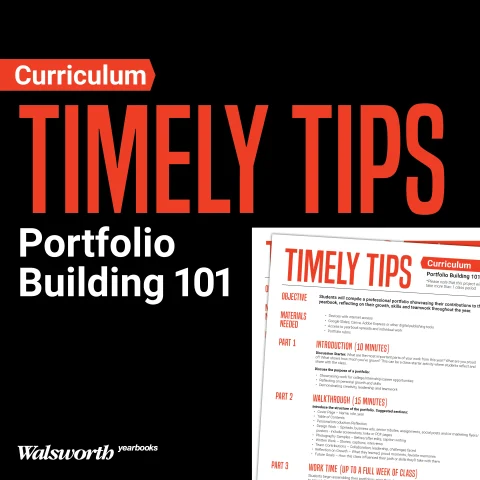Every fall we return to school with an eagerness to start the new yearbook. As the days turn into weeks and the first deadline approaches, an adviser needs to provide guidance as the staff learns what is required of them as individuals of this team effort.
In conjunction, I must assess these students and maintain the expectations the editors and staff established at the start of the school year. I have my processes, too.
I spend the first few weeks teaching my staff the basics, meaning we are not using computers. Then, each student is assigned to a photographer, copy writer or designer position and is monitored by the editor-in-chief, the managing editor and editors who are in charge of each specialized group. Now the mastery of the basics, the learning of advanced material and meeting deadlines can begin.
Communication is key. When any work requires more than one person’s involvement, the students must keep others informed of their progress. In addition to texting, emailing, phone calls, Online Design messages and even writing messages on printouts, my managing editor created a Facebook group that has provided a discussion board for the staff. This private option allows only staff members to discuss any problems, concerns and questions they have.
We set mini-deadlines. These deadlines leading up to submission are set in stone, unless circumstances beyond an adviser’s control occur, and correspond to our page-creation process of:
- Angle development
- Research and observations
- Developing interview questions
- Conducting interviews
- Reviewing interviews
- Layout sketches
- Writing copy and caption drafts
- Image selection by the designer and photographer
The editors and I monitor these mini-deadlines by checking on page progress on Online Design and meeting with individuals and teams. Together we document the progress.
We check work with critique week. This occurs two weeks before the submission deadline. We review what each team has accomplished, discussing each page with the copy writer, designer and photographer. As teams presents their pages, the editors make positive comments, corrections and suggestions, including naming people to increase student coverage.
At the start of these critiques, Online Design permission for all copy writers and photographers is removed to reduce the risk of pages being modified once editors have made final changes. The editors can ask the photographer and copy writer to continue to make revisions, but all changes must be sent to the editor, who revises the page.
Critique week also reveals any photographer, copy writer or designer who falls short with their assignment. If that happens, they earn half credit and the editor completes the page. The team is then given a grade together for the end result, but only after I confirm who actually did what on which pages.
The editors earn a grade separate from their role since they are assigned the theme pages, but I do not allow them to be assigned to pages that the staff can cover since their job is to manage the staff and monitor page progress and quality.
As an Illinois school, prior review is part of our critique week. I print the pages a few days after the critique to confirm that quality work is done and give them to the administration to review.
Reflection is an essential part of growth and learning. After the first deadline, and subsequent deadlines if needed, I require my staff to think about their performance. These are the questions I ask the staff members:
1. Define good areas and areas of improvement based on the work you produced. Develop a list of three to five items for each category – be specific.
2. From number one, develop three goals you would like to achieve for the pages you have been assigned for the second deadline.
3. Develop a plan and timeline for you to achieve the goals you developed in number two.
4. Explain what you have learned from your experience with the first deadline. What changes would you have made? Why?
5. What are some areas you want to learn more about to help you achieve the goals in number two and even to aid in your position on staff?
These are the questions I give to my editors:
1. Define good areas and areas of improvement based on the work of the staff. Develop a list of three to five items for each category – be specific according to your position’s focus of the page process and staff development of these areas.
2. From number one, develop a list of three goals you would like the staff to achieve for the second deadline.
3. Develop a plan and timeline for them to achieve these goals you have developed for them in number two.
4. Explain what you have learned from your experience with the first deadline in your role as an editor. What changes would you have made? Why?
5. What are some changes you want to make to help your staff achieve these goals and the quality of book you all want to create and publish?
Once during each quarterly grading period, I require all students to complete a self-evaluation. I use this as a basis to complete the role on staff position rubric that assesses their understanding, completion and conduct as a staff member.
By following through with my process during the school year, I am able to keep the routine of a deadline process smooth, while building upon students’ abilities in copy writing, photography, design and editorial leadership.




